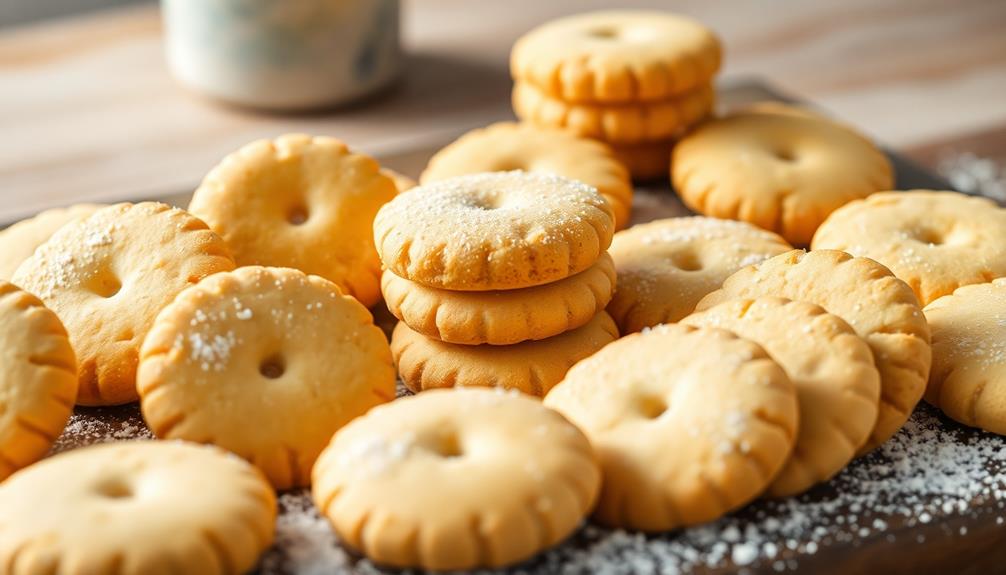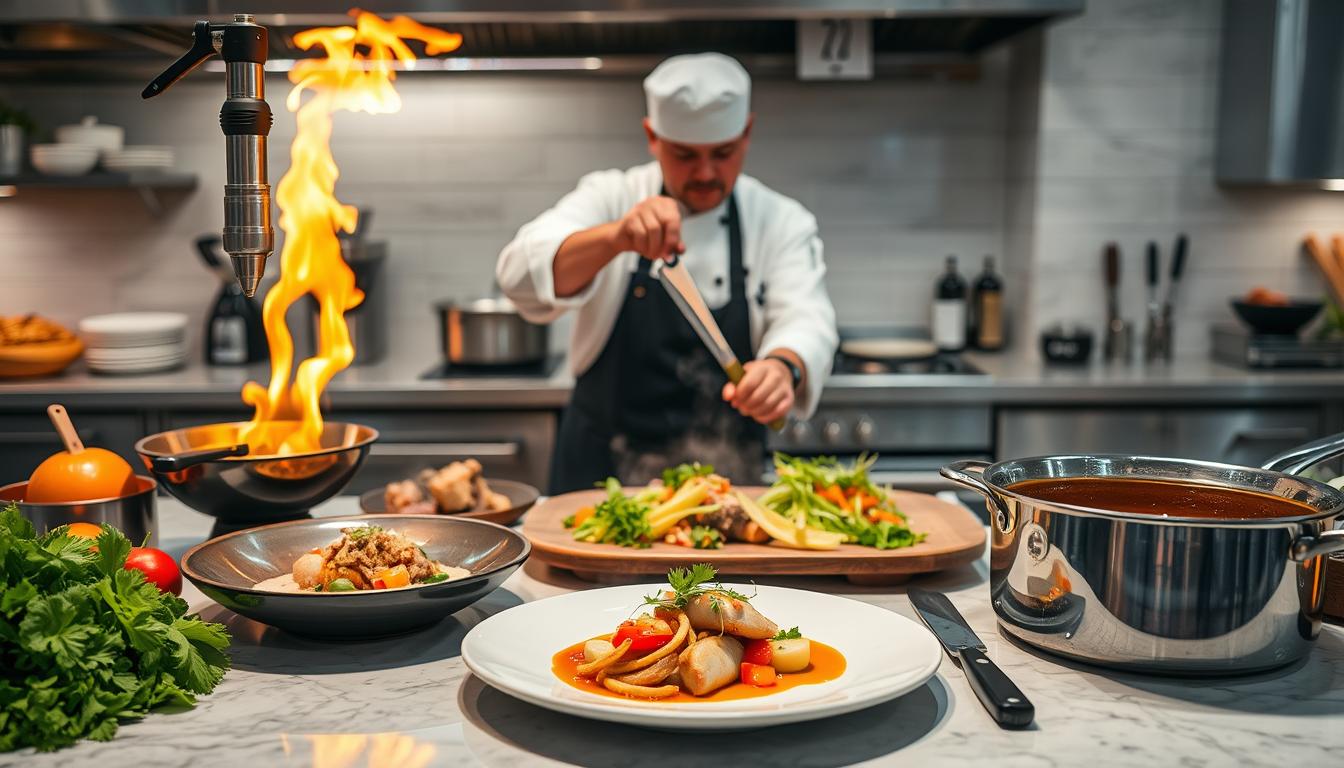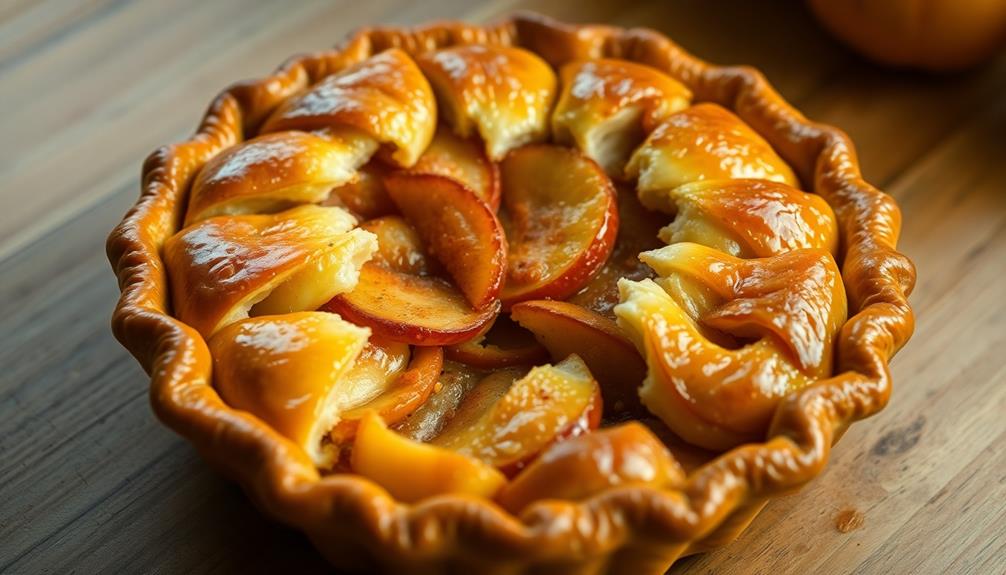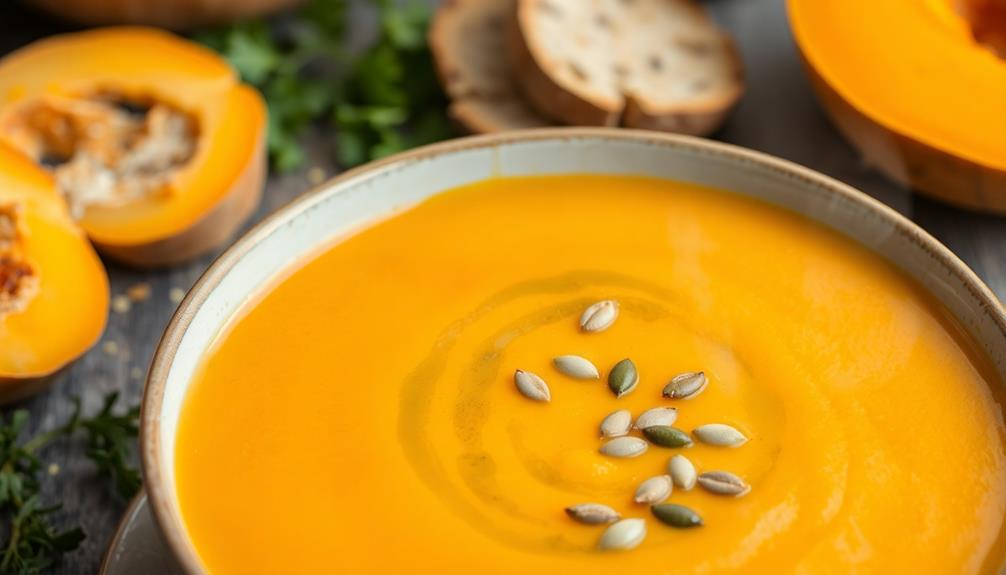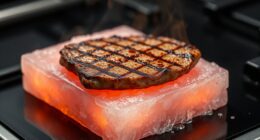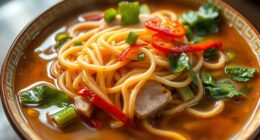Shortbread cookies are a classic Scottish treat that'll make your taste buds dance with delight! These crumbly, buttery delights trace back to medieval times, when they were reserved for special occasions. Today, you can enjoy their timeless goodness any time – just a few simple ingredients like butter, sugar, and flour come together to create a melt-in-your-mouth sensation. Baking them is a rewarding experience, filling your kitchen with an irresistible aroma. Whether you enjoy them with a warm cup of tea or share them with loved ones, shortbread cookies are a real treat that'll have you coming back for more. But that's just the start…
Key Takeaways
- Shortbread cookies have their origins traced back to medieval Scotland, where they were once known as "biscuit bread" and reserved for special occasions.
- The classic shortbread recipe consists of just three main ingredients: butter, sugar, and flour, creating a crumbly, melt-in-your-mouth texture.
- Proper creaming of the butter and sugar is crucial for achieving a light and tender shortbread cookie, incorporating air into the mixture.
- Baking the shortbread cookies at the right temperature and duration is essential for a golden-brown color and a satisfying balance of simplicity and indulgence.
- Shortbread cookies are enjoyed worldwide, serving as a timeless treat that evokes nostalgia and warmth, and can be shared with family and friends.
History
The origins of shortbread cookies can be traced back to medieval Scotland, where they were initially known as "biscuit bread."
Traditionally, these crumbly treats were reserved for special occasions and celebrations, often associated with festivities such as Hogmanay, the Scottish New Year. You can just imagine the aroma of freshly baked shortbread wafting through the air, tempting the senses with its buttery richness and delicate texture.
Back then, the dough was kneaded by hand, and the cookies were carefully shaped and decorated, reflecting the care and attention paid to each batch.
Over time, the recipe evolved, with the addition of sugar and other ingredients, but the core elements – butter, flour, and a touch of magic – remained the same.
Today, shortbread cookies continue to be a beloved classic, enjoyed by people around the world as a comforting reminder of Scotland's rich culinary heritage.
Recipe
Shortbread is a classic, buttery cookie that's a delight to bake and enjoy. This simple recipe yields a crisp, melt-in-your-mouth shortbread that's perfect for any occasion. Whether you're looking to share with friends or enjoy on your own, these shortbread cookies are sure to satisfy your sweet tooth.
The key to creating the perfect shortbread is to use high-quality, fresh ingredients and to handle the dough delicately. By following this recipe and taking a few simple precautions, you'll be able to achieve the signature crumbly texture that makes shortbread so irresistible.
- 1 cup (2 sticks) unsalted butter, softened
- 1/2 cup granulated sugar
- 2 cups all-purpose flour
- 1/4 teaspoon salt
Preheat your oven to 325°F (165°C). In a large mixing bowl, cream the softened butter and sugar together until light and fluffy. Gradually add the flour and salt, mixing just until the dough comes together. Be careful not to overmix.
Shape the dough into a disk, wrap it in plastic wrap, and refrigerate for at least 30 minutes. Once the dough has chilled, roll it out onto a lightly floured surface to a thickness of approximately 1/4 inch. Cut the dough into desired shapes, such as rounds or squares, using a cookie cutter or a sharp knife.
Transfer the shaped cookies to a parchment-lined baking sheet, spacing them about 1 inch apart. Bake the shortbread cookies for 15-20 minutes, or until they're lightly golden around the edges. Be careful not to overbake, as the cookies should still be slightly soft in the center.
Allow the cookies to cool on the baking sheet for a few minutes before transferring them to a wire rack to cool completely. Enjoy your homemade shortbread cookies!
Cooking Steps
First, you'll need to cream the butter and sugar together until they're light and fluffy.
Then, you'll mix in the flour and salt to make a soft dough.
Roll the dough into little balls, flatten them with a fork, and pop them in the preheated oven.
Can't wait to see how your homemade shortbread cookies turn out!
Step 1. Cream Butter and Sugar Together
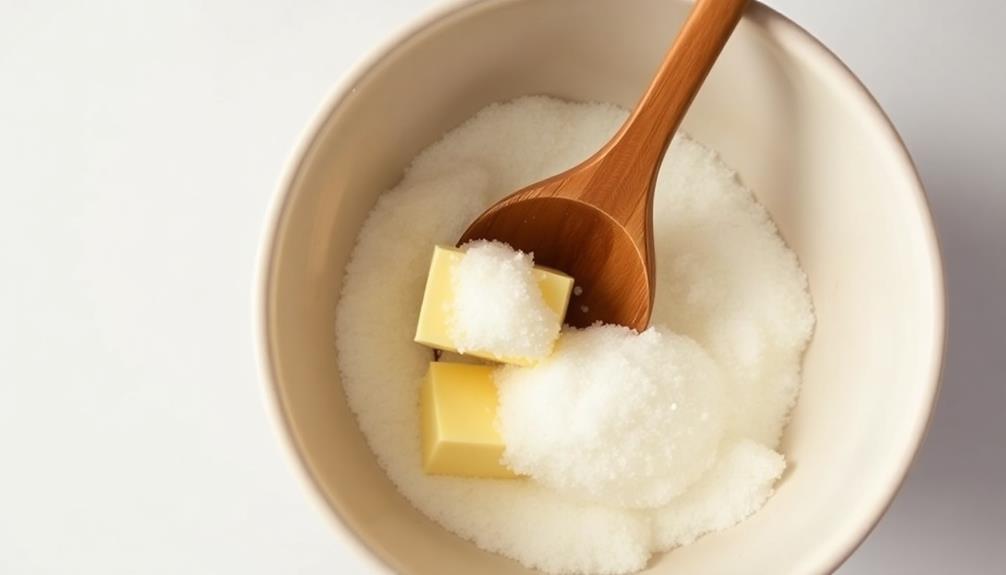
Creaming the butter and sugar together is a crucial step in making delectable shortbread cookies. This process helps incorporate air into the mixture, resulting in a light and tender texture.
Start by placing the softened butter in a large mixing bowl. Using a wooden spoon or an electric mixer, beat the butter until it's smooth and creamy. Next, gradually add the granulated sugar, mixing well after each addition.
Cream the butter and sugar together until the mixture is light and fluffy, about 2-3 minutes. You'll know it's ready when the color has lightened and the texture has become airy.
This step is important, as properly creamed butter and sugar will give your shortbread cookies that melt-in-your-mouth sensation. Once you've achieved the perfect creamy consistency, you're one step closer to baking up a batch of irresistible shortbread cookies.
Step 2. Add Flour and Salt
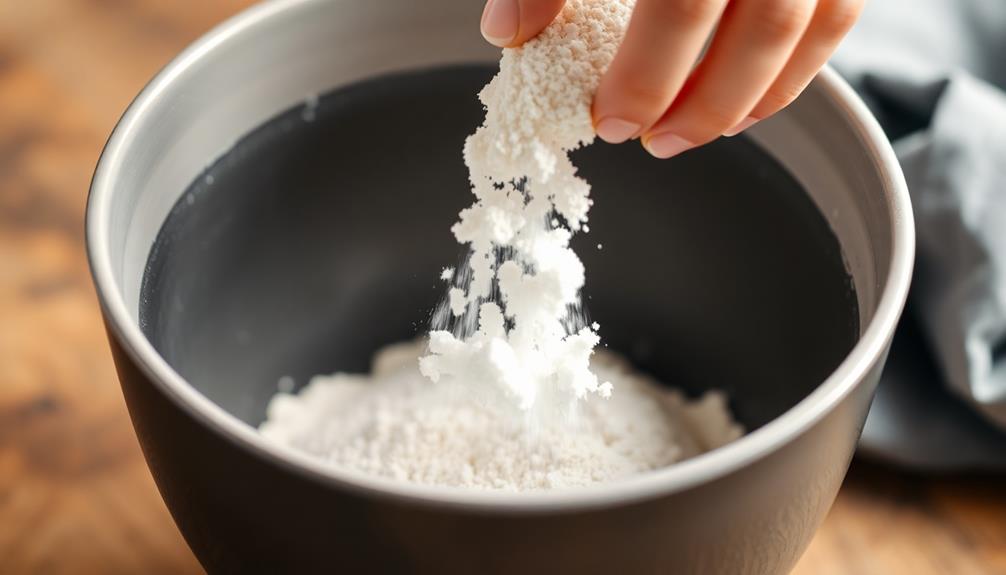
With the butter and sugar now perfectly creamed, it's time to add the dry ingredients. In a separate bowl, whisk together the flour and salt until they're well combined. This is a crucial step in making your shortbread cookies turn out just right. The flour gives the cookies their signature tender, crumbly texture, while the salt enhances the rich, buttery flavor.
Slowly add the flour mixture to the creamed butter and sugar, mixing gently until it's fully incorporated. Be careful not to overmix, or your cookies could end up tough and dense.
Embrace the slow, rhythmic motion of stirring – it's almost meditative! As the dough comes together, you'll notice it starts to form a smooth, cohesive ball. This is exactly what you want.
Now you're ready to shape and bake your delicious shortbread treats. Get excited, because the best part is still to come!
Step 3. Roll Dough Into Balls
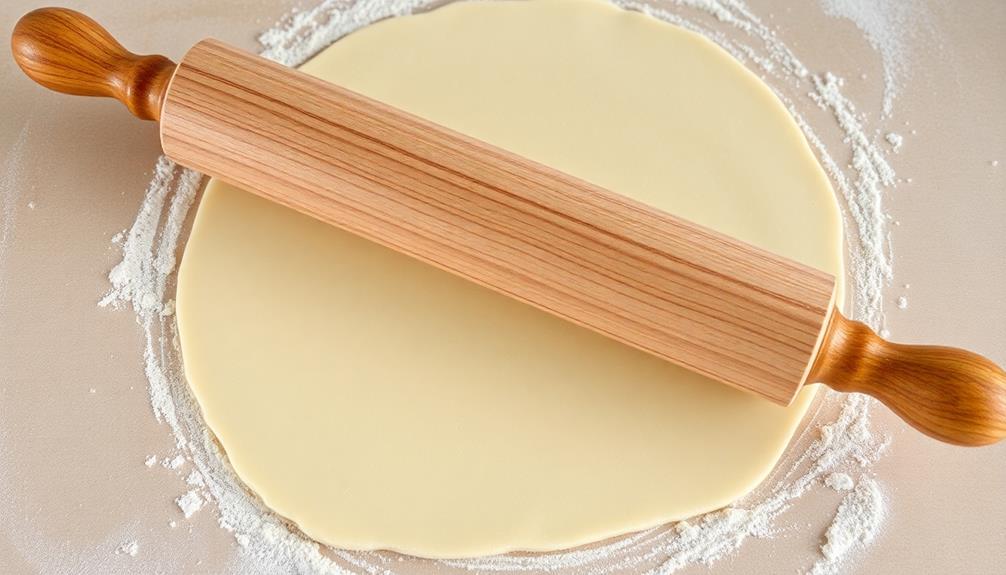
Take a small handful of the freshly made dough and gently roll it between your palms to form a smooth, round ball. As you roll, feel the soft, pliable texture of the dough, almost like a tiny cloud in your hands.
Continue rolling until the ball is nice and round, with no cracks or lumps.
Once you've got your first ball ready, place it on the baking sheet, leaving a bit of space between each one.
Repeat this process, taking a bit more dough and rolling it into a ball, until you've used up all the dough. Be careful not to overwork the dough, or the cookies might become tough. Just a gentle, rolling motion is all you need to create these perfectly spherical treats.
When you're finished, you should have a whole tray of evenly-sized dough balls, all waiting to be baked into delicious, buttery shortbread cookies.
Aren't they just the cutest little things? Now you're one step closer to enjoying warm, homemade shortbread goodness.
Step 4. Flatten Dough With Fork Pattern

Next, gently press each dough ball down with the tines of a fork, creating a crisscross pattern across the top. This simple technique not only looks fantastic, but it also helps the cookies bake evenly. As you apply just the right amount of pressure, you'll see the dough flatten into a delightful, textured surface.
Feel the satisfying "thump" as the fork meets the dough, leaving behind its signature mark. Repeat this process for each cookie, making sure to space them out on the baking sheet.
The criss-cross design adds a charming, homemade touch that will have everyone oohing and aahing over your baking skills.
Don't be afraid to get a little creative, too! You can experiment with different fork patterns, like parallel lines or a dotted design. Just have fun with it and let your personality shine through.
Before you know it, you'll have a tray of beautifully decorated shortbread cookies, ready to be enjoyed by all. You can also add some variety to your cookie tray by trying out different decorating techniques, such as piping on intricate designs or adding sprinkles and edible glitter. If you’re feeling adventurous, you could even experiment with different flavors and incorporate ingredients like lemon zest or cocoa powder into the dough. And if you’re in the mood for something completely different, why not switch things up and give this gingerbread pancake recipe a try? It’s a fun and delicious twist on a classic holiday treat.
Step 5. Bake in Preheated Oven
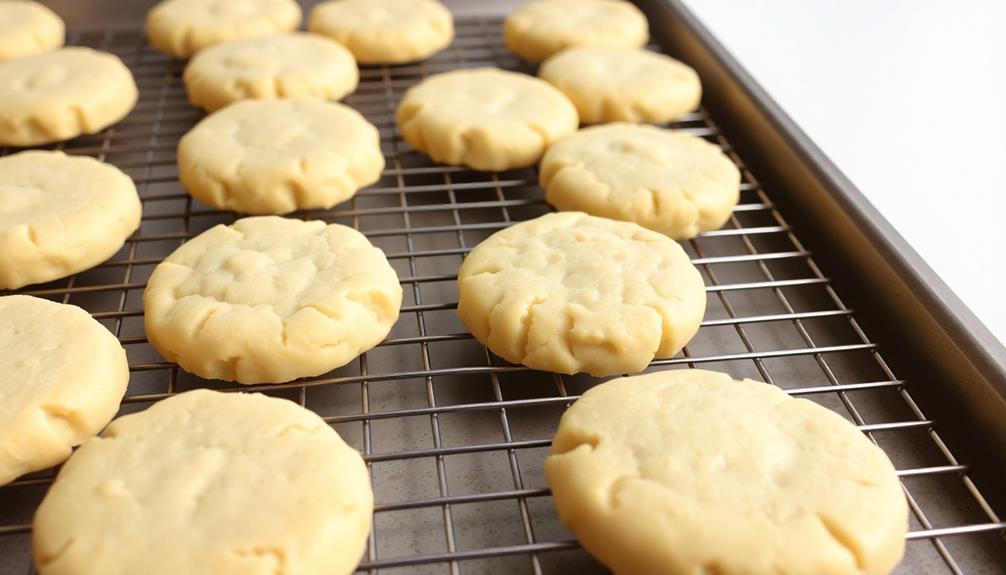
Once the dough has been flattened with the fork pattern, transfer the prepared cookies onto the preheated oven racks.
You'll want to work quickly, as you don't want the dough to warm up too much before it goes into the oven.
Carefully slide the racks into the hot oven, making sure not to bump the cookies and ruin their shape.
As you enjoy your baking, consider pairing these delightful cookies with a warm cup of herbal tea to enhance the experience; chamomile or peppermint would complement the buttery flavors beautifully.
As the shortbread bakes, your kitchen will fill with the most amazing buttery aroma.
Keep an eye on the cookies, checking them every few minutes.
They should turn a lovely golden brown color as they cook.
When they're done, the edges will be crisp, while the centers will still be slightly soft.
Use oven mitts to carefully remove the racks from the oven.
Let the cookies cool on the racks for a few minutes before transferring them to a wire cooling rack.
Once they've had a chance to set, you can enjoy their delightful crumbly texture and rich flavor.
Mmm, just thinking about those warm, freshly baked shortbread cookies makes my mouth water!
Final Thoughts
Shortbread cookies are a timeless classic, and the final thoughts on this delightful recipe are worth considering.
You've mixed the dough, chilled it, and baked the cookies to golden perfection. Now, as you admire their delicate crumble and buttery aroma, you can't help but feel a sense of accomplishment.
These shortbread treats are the perfect balance of simplicity and indulgence, making them a go-to choice for any occasion. Whether you're serving them at a cozy family gathering or enjoying them with a warm cup of tea, these cookies are sure to bring a smile to everyone's face.
The satisfaction of creating something so delicious from just a few humble ingredients is truly rewarding. As you savor the last bite, you'll be tempted to whip up another batch.
After all, the joy of baking and sharing these timeless treats is what makes the journey so sweet.
Frequently Asked Questions
How Long Do Shortbread Cookies Last?
Properly stored, shortbread cookies can last up to 2 weeks. Store them in an airtight container at room temperature. If they start to lose their crisp texture, they're probably past their prime and should be discarded.
Can I Freeze Shortbread Cookies?
Yes, you can definitely freeze shortbread cookies! They'll keep for several months in the freezer. Just make sure to store them in an airtight container or resealable plastic bag to prevent freezer burn.
What Are the Best Tools for Cutting Shortbread?
The best tools for cutting shortbread are a sharp knife, a bench scraper, or a cookie cutter. They'll give you clean, precise cuts and help maintain the delicate texture of the dough. You can even use a pizza cutter in a pinch.
Can I Use a Different Type of Flour?
You can use a different type of flour, but it may affect the texture and flavor of your cookies. Consider experimenting with alternatives like almond flour or gluten-free flour, but be prepared for potential changes in the final result.
How Do I Store Leftover Shortbread?
You can store leftover cookies in an airtight container at room temperature for up to a week. This helps keep them fresh and prevents them from drying out. Enjoy your tasty treats!
